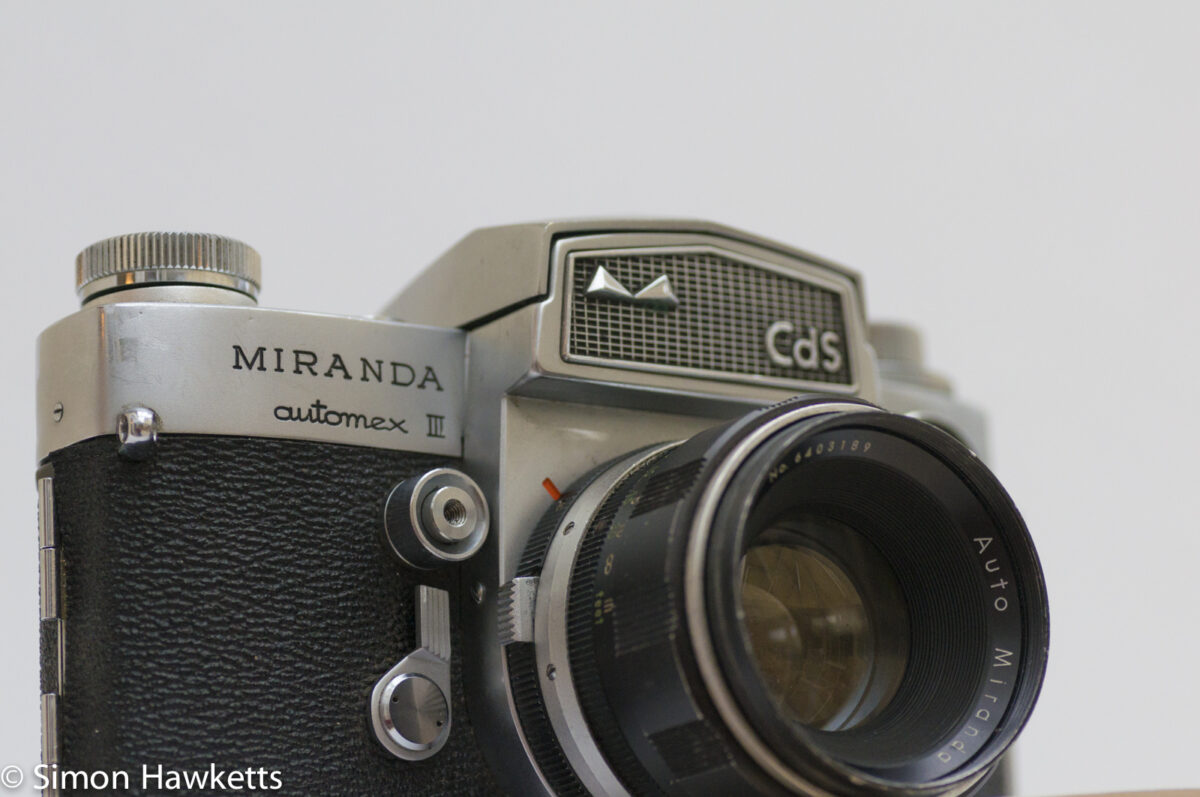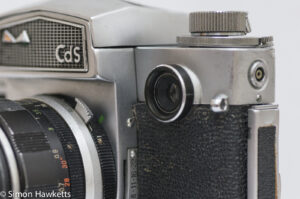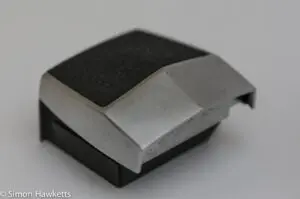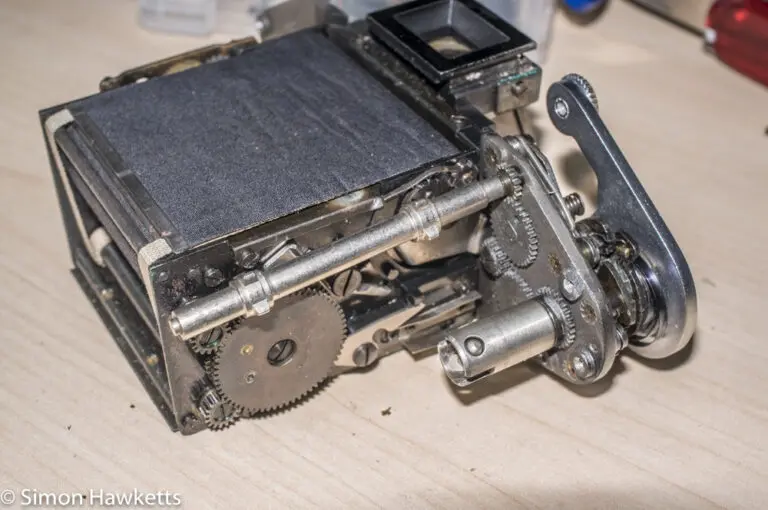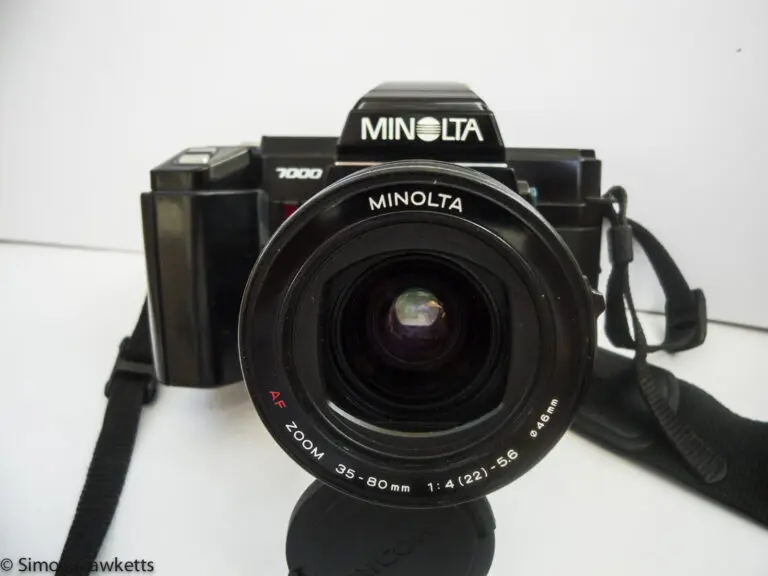Miranda Automex III 35 mm SLR camera
I’ve manage to acquire a new (well, old) Miranda camera to add to my Miranda camera collection. It’s a Miranda Automex III, which dates from about 1964 and was the model which directly preceded the Sensorex model.
The Automex III is a similar size to the Sensorex which eventually replaced it. There were 3 revisions of this camera, the Automex and the Automex II and then the model I have here, the Automex III. The changes between each model were fairly subtle, such as an increase in the ISO range and moving the light sensor from the front plate to the panel under the rewind crank.
Miranda Automex III Images
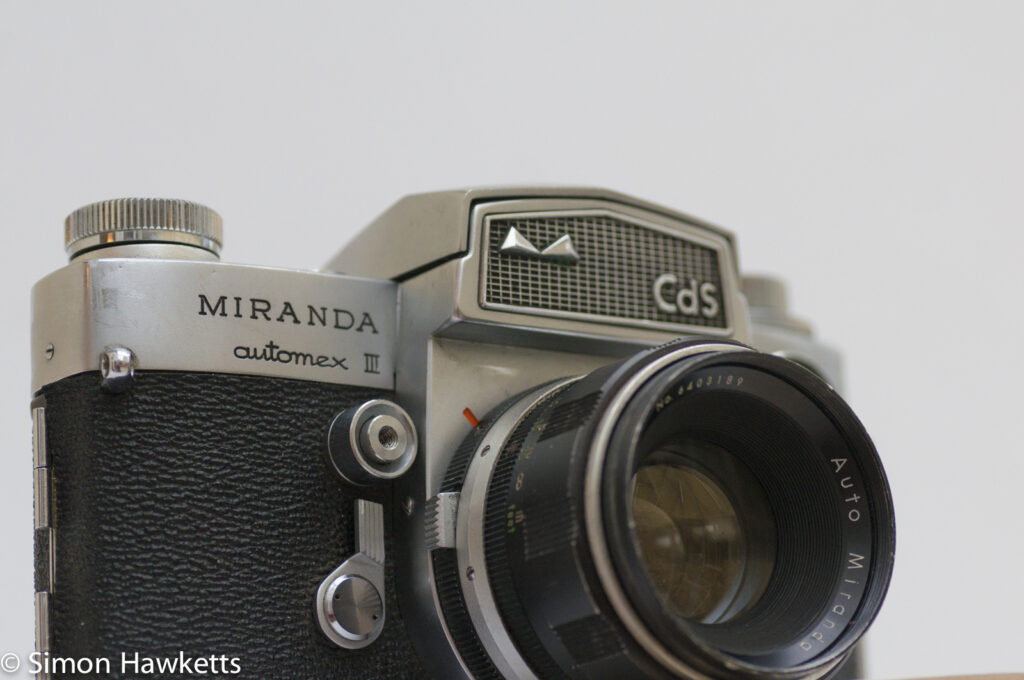
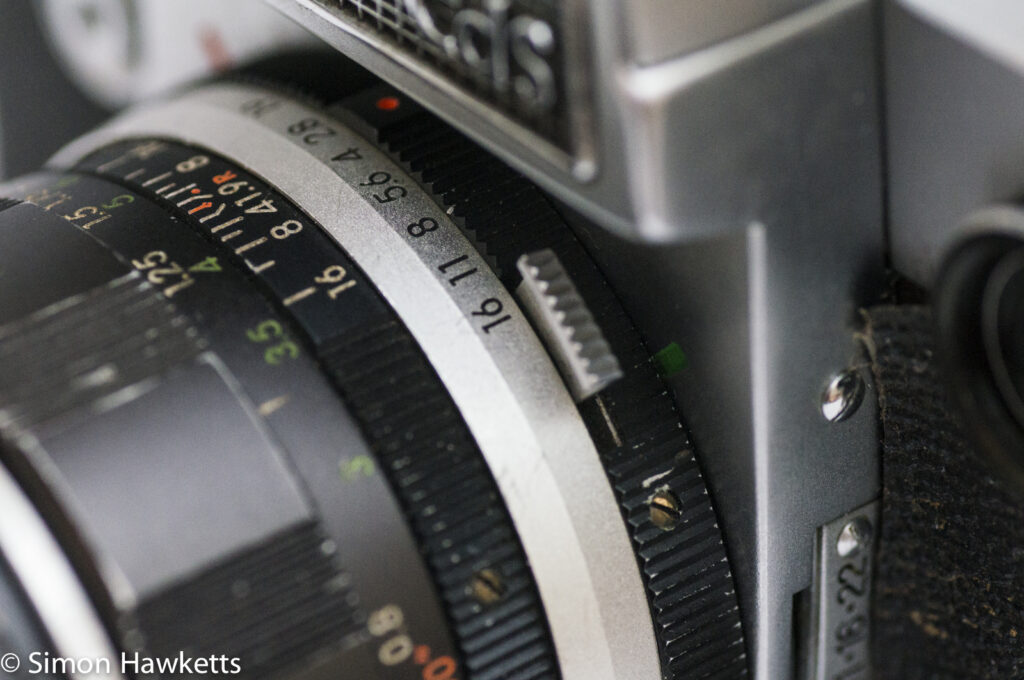
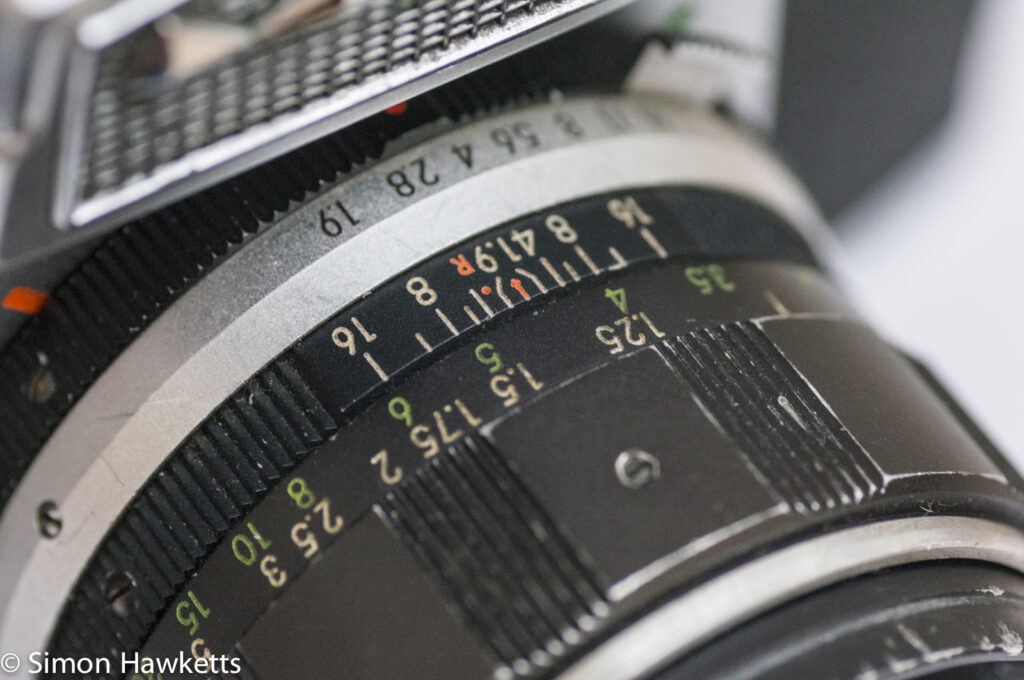
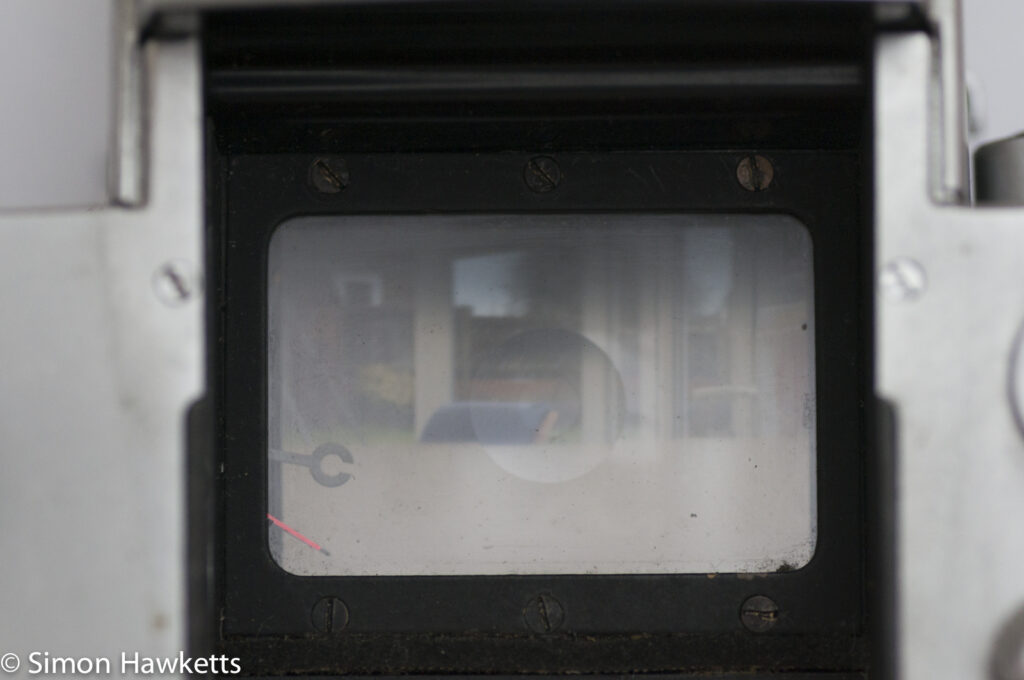
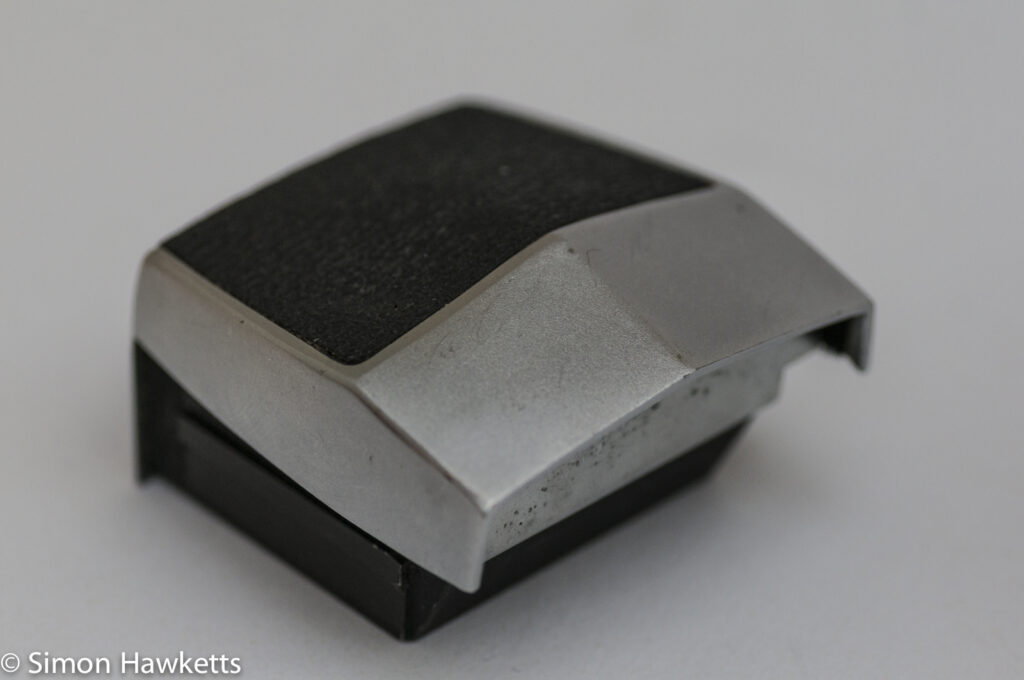
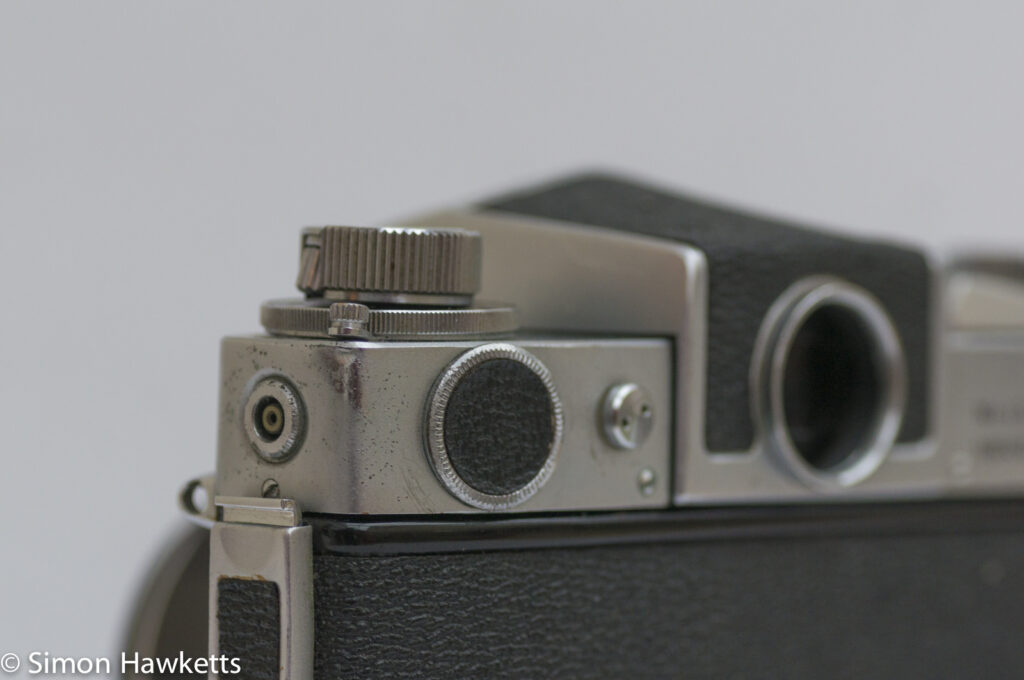
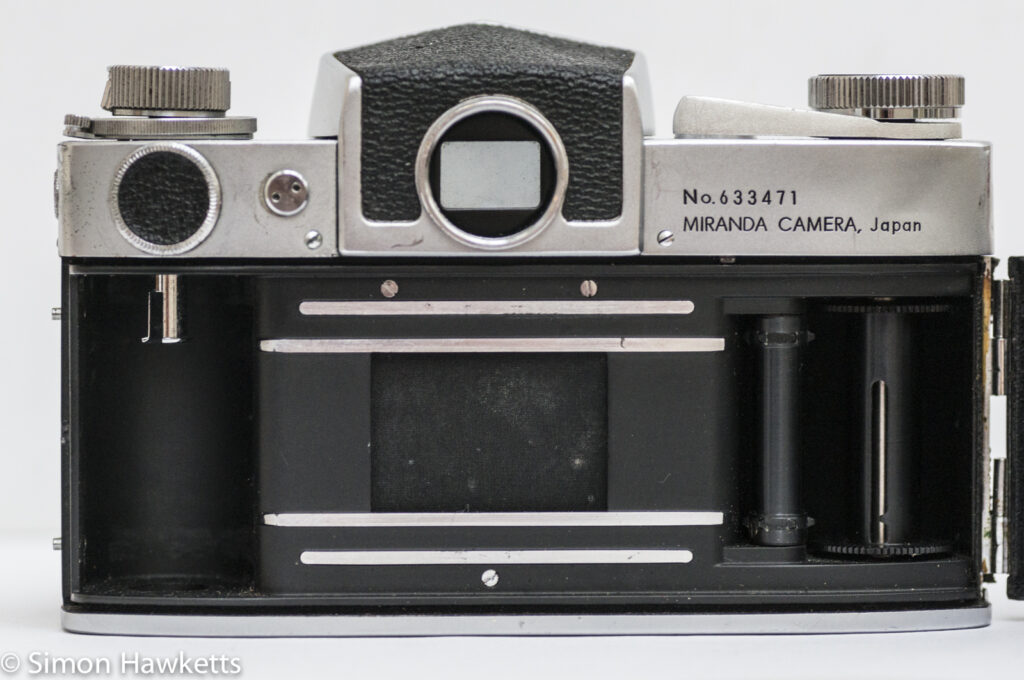
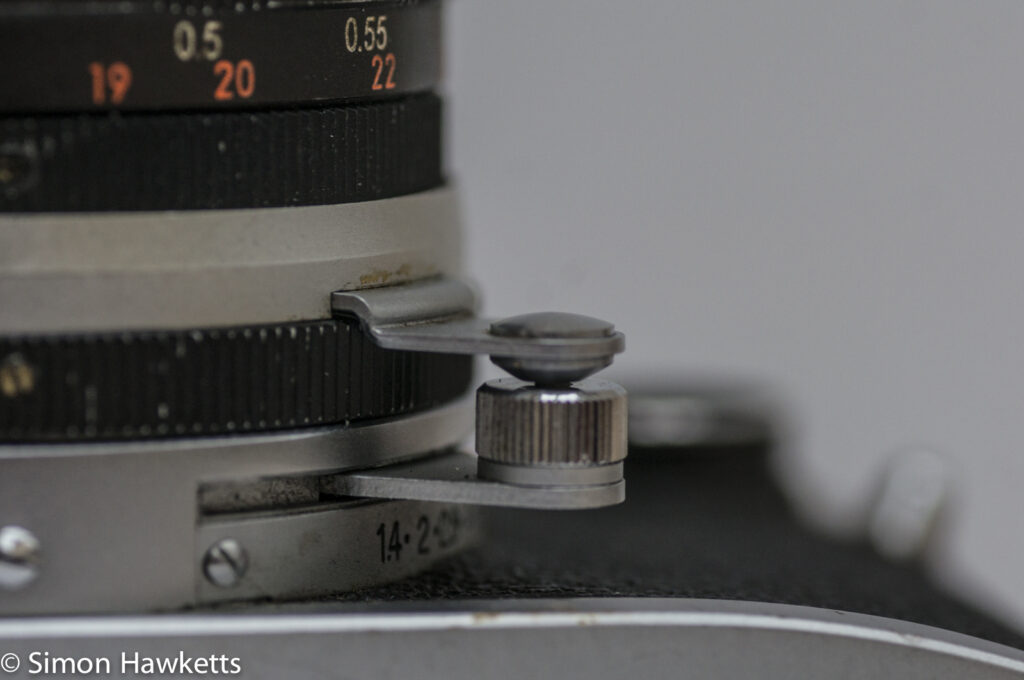
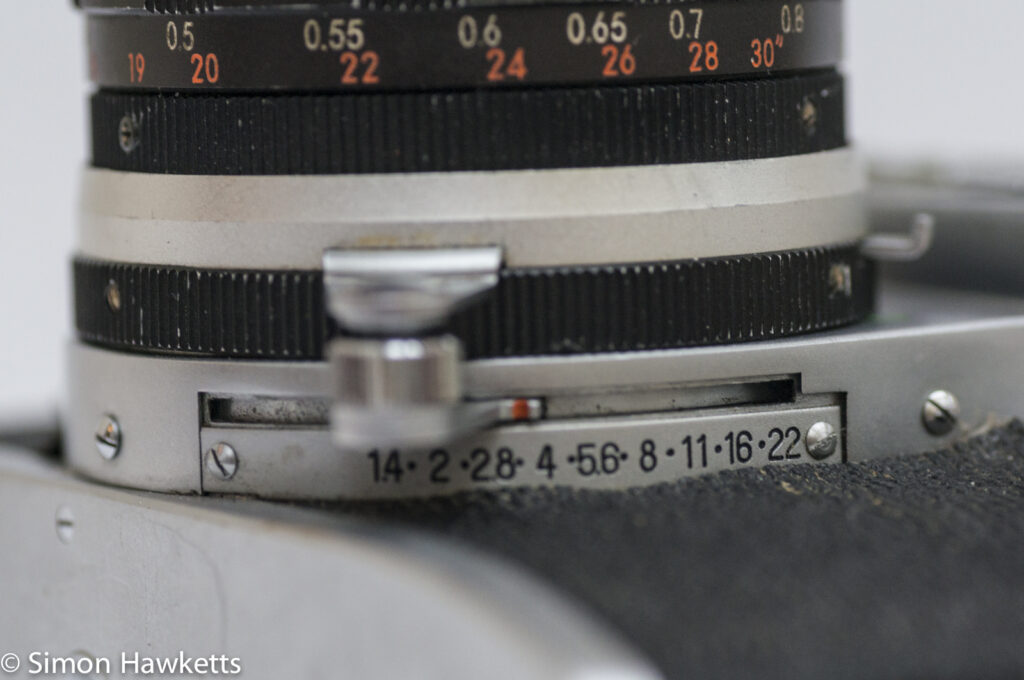
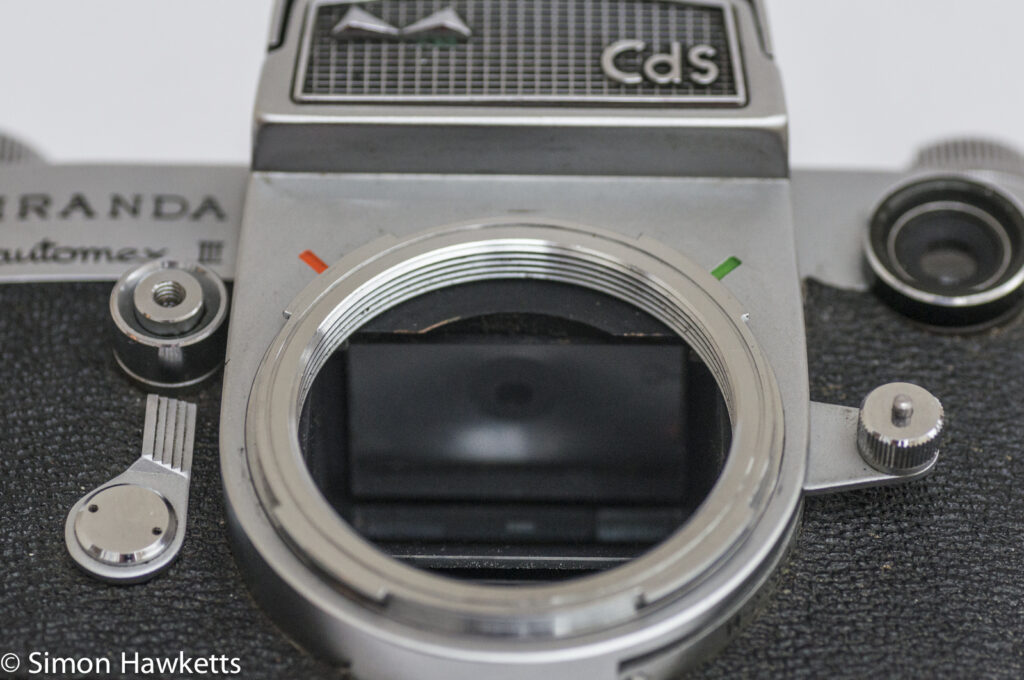
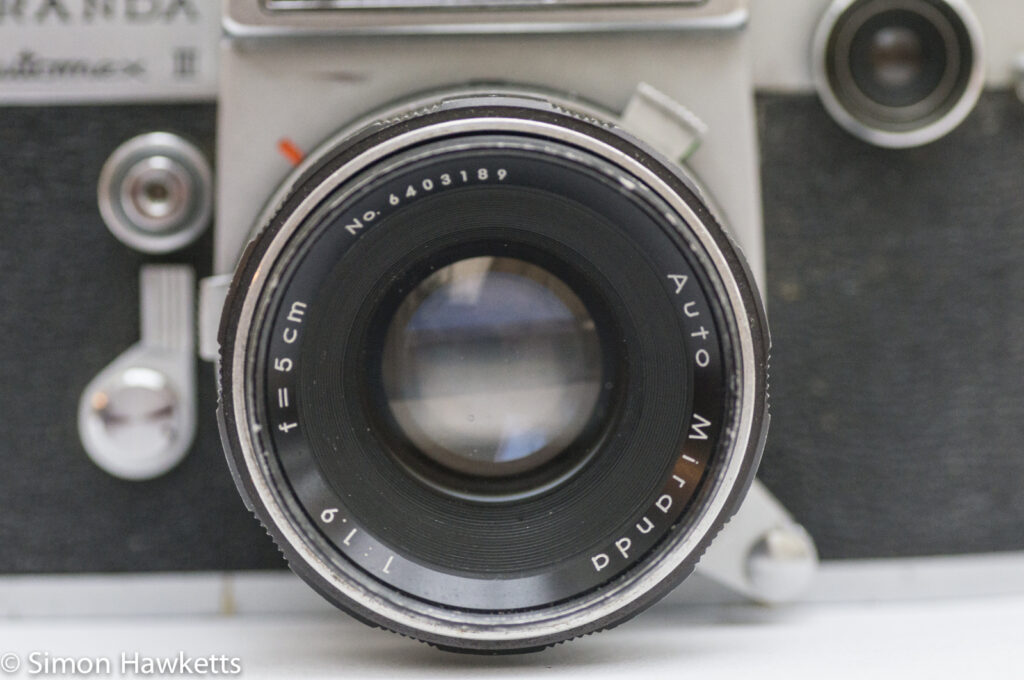
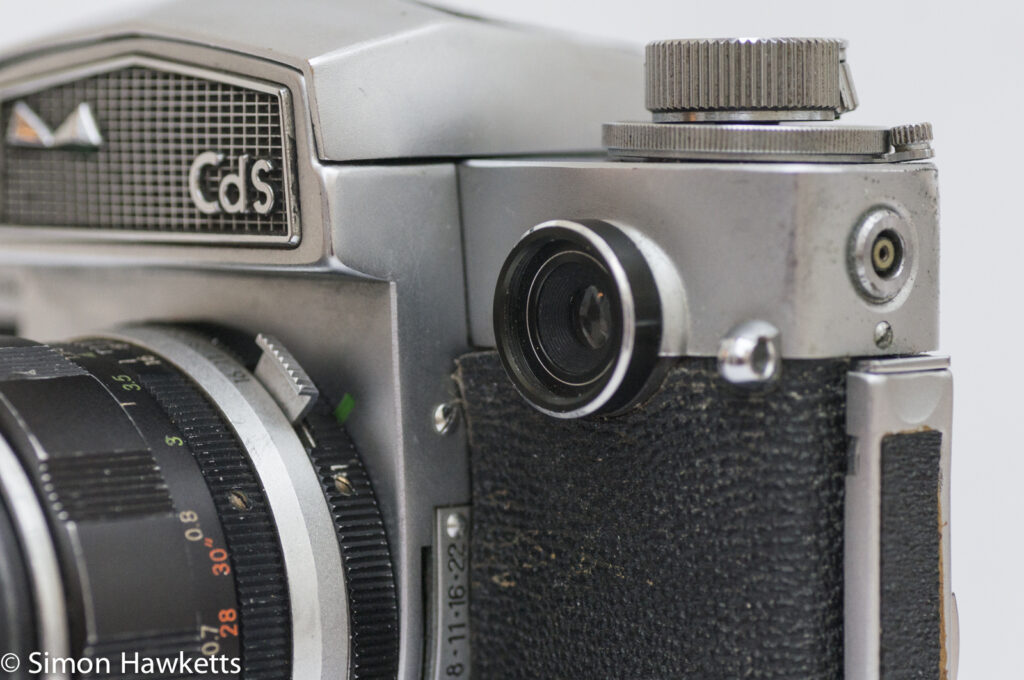
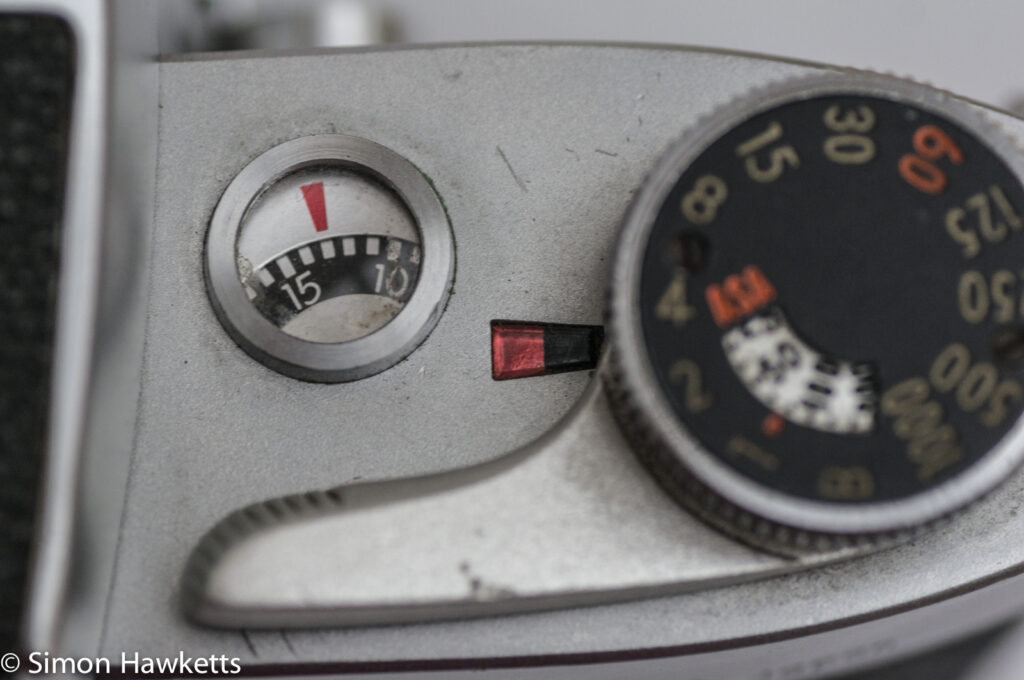

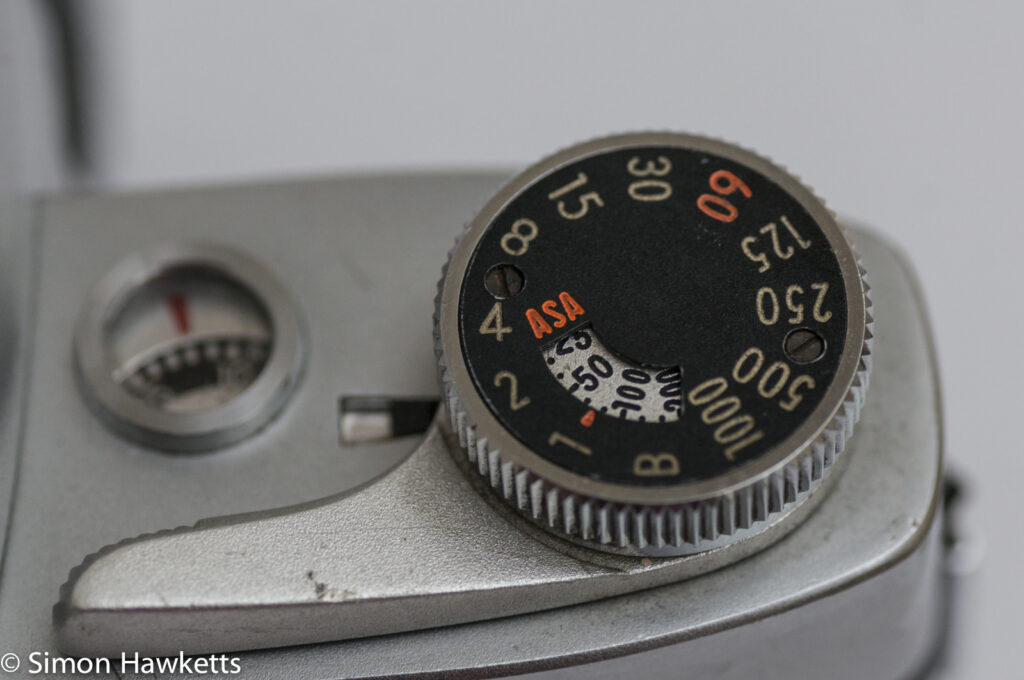
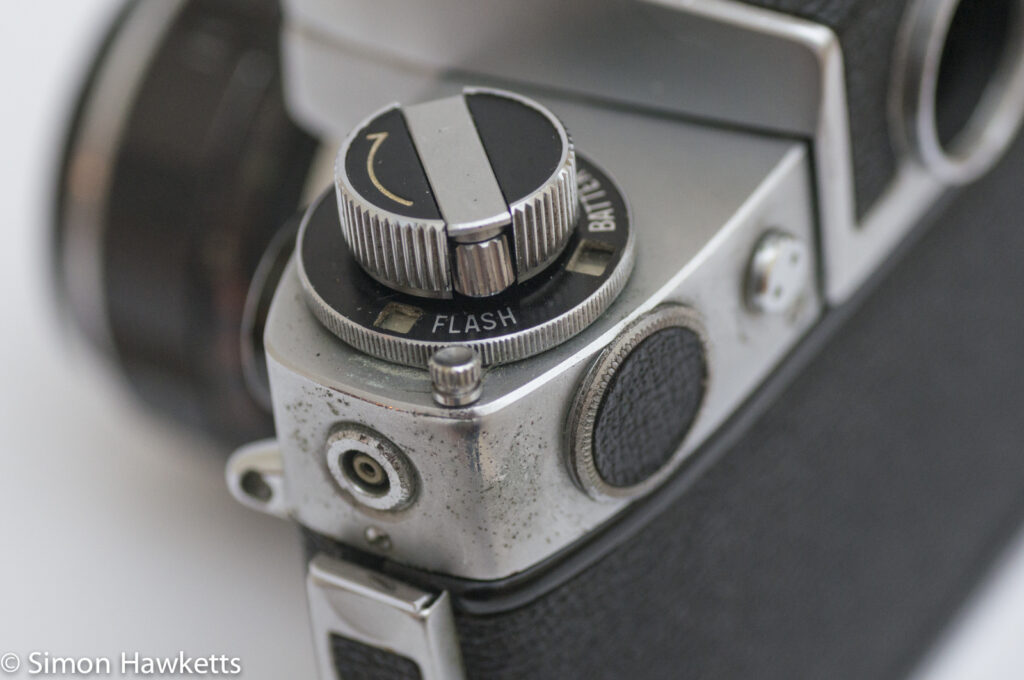
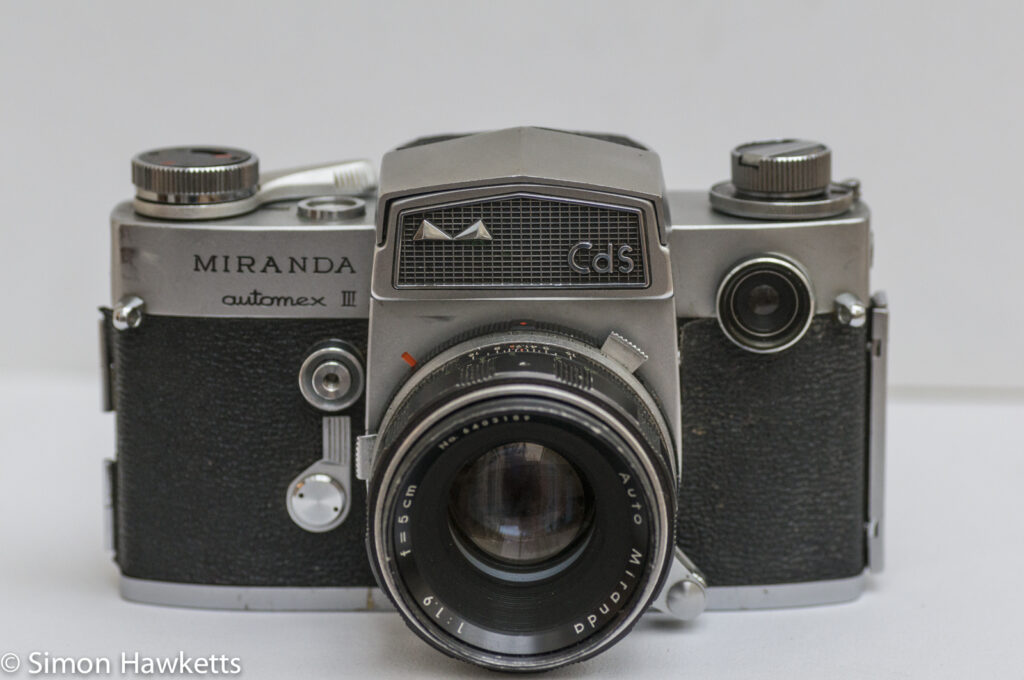
My Miranda Automex III camera
The model I bought seems in fairly good condition for a camera of this age. The focus adjustment is a bit loose, but also has a few spots where is binds a bit, which is almost certainly because the focus helicoid needs re-greasing. The lens also has some dust and dirt on some of the elements, and what looks like a bit of fungus, but these lenses are really easy to work on, so I should be able to address all these issues.
The camera body has a few bright areas on the aluminium and the viewfinder has taken a small knock on one side, but mechanically all seems sound. Even the slow shutter speeds seem to work at about the right speed, which is one of the normal problem areas. The focus screen will need a clean, but I assume that will be basically the same as the Sensorex which I had to do. I may need to strip down the shutter speed setting assembly because there is a bit of play in it, but again this is a minor repair job.
Miranda Automex III Description
The following sections describe some of the individual features of the Miranda Automex III
Exposure Measurement
The exposure is controlled in the camera by a match needle system visible in the viewfinder.
The light is measured by means of a Cds cell fitted to the front of the camera, and the lens aperture is communicated to the camera body via a lever which couples to the lens aperture adjustment arm. The compensation for film speed is set with a control dial mounted into the shutter speed dial. This is basically the same system the Sensorex uses. Because the Automex (like all the Miranda cameras before Dixon’s bought the name) has a replaceable viewfinder, the match needle is fitted under the focusing screen, so it is visible whichever viewfinder is fitted.
The problem with this system is it can only measure the average light reflected from the scene, so it would not be able to detect backlit subjects, for example. The photographer had to recognize these situations and compensate (not so different from today, I guess). In future models like the Sensomat, the light cell was built into the mirror, so it could average over a precise area of the picture or do spot metering, but for its day the Automex was as good as most cameras.
If you were using the camera with a lens which didn’t have the coupling arm, you could still use the metering, but you had to read the aperture value from the lever on the camera and transfer that value to the lens aperture. A bit more fiddly, but still usable.
Viewfinders
As I said above, all the Miranda series had replaceable viewfinders (until the DX-3 that is, which was the start of the decline of Miranda) and this model was no exception.
The design of the viewfinders are different for this model from the ones fitted to the other models in the Miranda range, however. This was because of the flat plate in the front of the camera which, on the Automex and Automex II, had the photo cell fitted. This meant the front of the viewfinder had to be recessed in order to fit. Although this probably annoyed anyone who had viewfinders and upgraded their Miranda D or F, the Automex and Sensorex ranges are bigger cameras physically, so would probably have needed a bigger viewfinder even if the design had been the same.
I only have the viewfinder which is fitted to the camera, but I believe the same critical focusing, magnifying and waist level finders were made to the Automex as had been made for the other, earlier cameras in the series.
The Automex has a three circle focus assist system in the viewfinder – an inner microprism circle, an outer circle and then a Fresnel screen. Of course, these were built into the focusing screen and so appeared whichever viewfinder was being used.
Lens Mount
Miranda had a novel and clever way of allowing their legacy lenses to attach to the newer cameras once they moved to a bayonet mount. They simply made the bayonet fit on the outside of the screw thread mount and kept both! This meant that anyone who has a set of Miranda M44 screw thread lenses could screw them into the body and when they bought new bayonet mount lenses they fit them over the bayonet mount.
Other Features Of Miranda Automex III
Other features which make this a typical Miranda are the front mounted shutter release, the lovely frame cocked indicator, the stylish frame counter and the fantastic engineering which went into making it.
Miranda Automex III Specifications
- Miranda Automex III 35mm SLR
- 1sec to 1/1000 shutter
- Flash sync socket with X / FP switch
- ISO 25 to 1600 meter range
- Front mounted shutter release with cable thread
- 50mm f/1.9 lens with aperture control arm
- f/1.9 to f/16 aperture range
- 6 blade aperture
- Replaceable viewfinder (different design from Sensomat)
- Match needle metering
- Dual lens mount system
- Depth of field preview button
- Self timer
- Aperture coupled mechanically to camera body via external arm
- Removable back cover
- Cds cell on front plate
- Mercury cell to power meter (no longer available)
- Body Serial No 633471
- Lens Ser No 6403189
- Manual available online here
Discover more from Everything Vintage
Subscribe to get the latest posts sent to your email.

